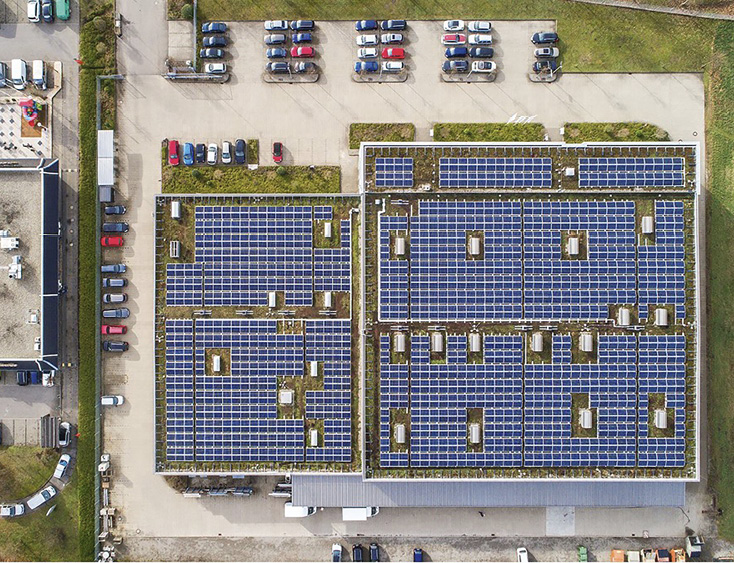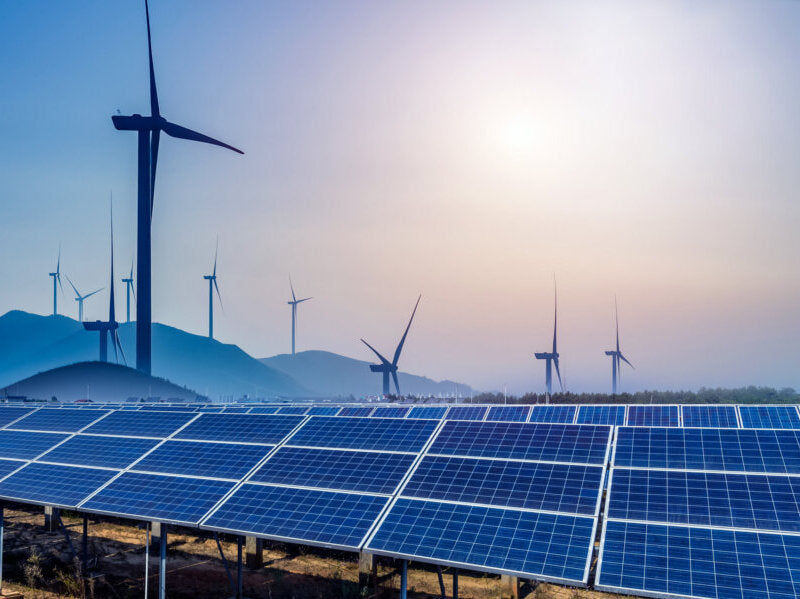https://www.pv-magazine.com/2023/01/07/weekend-read-is-eu-doing-enough/
Weekend read: Is EU doing enough?

The European Commission has proposed phasing in a legal obligation to install solar on all new and existing public and commercial buildings above a certain size, and on new residential buildings, between 2026 and 2029.
Image: SMA
After Russia’s invasion of Ukraine, the main energy policy focus among European governments has been on security of supply and consumer costs. This does not mean the green agenda and energy transition have been forgotten. In fact, many will say volatile fossil fuel prices and Moscow’s weaponizing of gas exports will accelerate the transition to clean energy, including solar and hydrogen.
At the EU level, the long-term push for renewables expansion continues with a flurry of initiatives in recent months. The reinvigorated Solar Photovoltaic Industry Alliance is one example, with the body endorsed by the European Commission in October and expected to have been launched last month.
“To meet Europe’s renewable energy objectives – and avoid replacing a dependency on Russian fossil fuels with new dependencies – we are launching an industrial alliance for solar energy,” said EU commissioner Thierry Breton, who has responsibility for the single market. “With the alliance’s support, the EU could reach 30 GW of annual solar energy manufacturing capacity by 2025 across the full PV value chain.”
The alliance aims to bring together industrial actors, research institutes, consumer associations, NGOs and others with a keen interest in solar. It is intended to deliver an action plan for the solar industrial value chain in Europe and to engage with the EU and member states on issues ranging from research and innovation, technology, and industrial supply chains, to raw materials, access to finance, supply chain resilience, and other matters. The commission statement, however, was short on detail and the alliance will have an awful lot to do in order to reduce an EU dependence on China, which currently sits at approximately 75% of its solar modules.
However, it has not always been that way and Louise van Schaik, head of unit for EU and global affairs at Dutch thinktank the Clingendael Institute, pointed to Germany’s once-thriving solar industry: “The EU will try to regain a position in the new generation of solar PV technologies, such as solar powered roads for charging EVs [electric vehicles].”
On the dominance of imported Chinese panels, Van Schaik says, “From a critical materials point of view, the EU sees this as undesirable. At the same time, they have to be careful. The EU does not want to be seen as against free trade or hostile to China on climate. There is not yet a supply crisis concerning solar panels, but if you look at the dependency on Chinese imports it is astonishing. There is a big risk that China will weaponize its supply of materials if there is a conflict between Washington and Beijing, for example over Taiwan. Although the EU tries to steer its own course on foreign policy, we are very much in NATO and the transatlantic camp.”
Van Schaik says it could take a long time to set up domestic production of solar panels and critical materials but explains the EU wants to be prepared in case there is a big falling out between the US and China. The EU is considering its options for domestic supply and the Solar Photovoltaic Industry Alliance could accelerate that process. “We saw with the Covid-19 vaccines that things can be rolled out fast if they are necessary,” says Van Schaik. “If the crisis is big enough, things will happen.”
Harald Overholm, CEO of Swedish solar developer Alight, says it will be hard to compete with China on price when it comes to raw material supply.
“It is almost like betting on a conflict with China,” he says. “To produce polysilicon, for example, you need access to cheap power and freshwater. Where in Europe can you get that?” The mechanics of setting up solar module assembly lines are not difficult, says the chief executive, but costs in Europe “are massive.”
Sourcing EU manufacturing capacity is strategically important for growth in the bloc’s solar industry, according to Conall Bolger, CEO of the Irish Solar Energy Association (ISEA). “Such growth is likely to involve collaboration across sectors so a structure like the Solar PV Industry Alliance would likely be necessary,” he says. “This kind of industry alliance can be powerful if it acts with a concerted focus to a defined program. We would be hopeful but encourage urgency.”
The EU’s work to diversify critical raw material supply and boost imports from resource-rich countries other than China began some time ago. As part of the EU’s action plan on critical raw materials, outlined in 2020, the European Commission signed strategic partnerships with Canada and Ukraine in summer 2021. With the latter agreement hamstrung by war, the bloc signed further memoranda of understanding with Kazakhstan and Namibia on the sidelines of November’s COP27 summit in Egypt, although details on these agreements remain rather few in number.
Ambitious targets
There is little doubt the commission sees solar as a major contributor to decarbonization, security of supply, and reduced energy dependence on Russia.
The EU Solar Strategy outlined under the RePowerEU plan presented in May sets a target of 320 GW of solar generation capacity by 2025 – twice today’s level. Under the plan, the number would almost double again by 2030, to 600 GW. These are ambitious targets. Overholm, however, believes they are achievable. “But that largely depends on three factors: environmental permitting, construction permitting, and grid connection. If that is all in place, the targets are achievable.”
On grid connection in Europe, he adds, “You are often at the mercy of DSOs [electricity distribution system operators] and the process can be slow and negative. And the RePowerEU plan does not address the grid problem.”
ISEA’s Bolger says reaching the 2030 target will require “four sets of measures working in concert.” Namely, standards that encourage rooftop PV, facilitation of utility scale projects – particularly easing grid and planning restrictions, facilitation of smart solar and hybrid projects, and accelerating the EU’s solar manufacturing capability.
The European Commission has proposed phasing in a legal obligation across the bloc to install solar on all new and existing public and commercial buildings above a certain size, and on new residential buildings, between 2026 and 2029.
On Nov. 9, the commission tabled temporary rules to accelerate renewables deployment. The measures included a derogation from Environmental Impact Assessments (EIAs) for solar panels on rooftops as well as in parking lots, sheds, and along transport infrastructure, “or any other artificial structures.” Installations below 50 kW of generation capacity would also be granted EIA exemptions.
If adopted by the EU Council of Ministers, the rules will apply to all member states for a year, which the commission says is the time needed for the adoption and transposition of the revised Renewable Energy Directive, a dossier currently under discussion by the co-legislators of the EU Parliament and council.
In its November proposal, the commission noted that, according to own estimates, 2022 will be a record year for Europe in terms of new renewable energy capacity, which is expected to surpass 50 GW. Solar installations are estimated to account for as much as 40 GW of the new capacity figure, with the vast majority of the increase taking place in the rooftop PV sector.
Popular content
Nevertheless, in order to achieve the 600 GW by 2030 target, this rate of growth still needs to increase by 50%, to 60 GW per year. “Global manufacturing of solar panels is growing rapidly, which indicates that the panels will be available,” a document associated with the temporary measures stated. “With the adoption of this proposal, and other flanking measures – in particular the adoption of the revised Renewable Energy Directive or initiatives in the skills sector – this acceleration is possible.”
Clingendael Institute’s Van Schaik notes the uptake of renewables is certainly going faster than expected but that this is mainly attributable to high fossil fuel prices rather than effective EU policy. She adds that the renewables targets under the RePowerEU plan have no legal consequences for member states that fall short as the measures are EU-wide, not national targets.
“The RePowerEU targets enable the EU to link renewables support to budgets and regulatory initiatives such as faster permitting,” says Van Schaik. “It is more about steering policy direction than reaching a number. Before, targets set at member state level made more sense. But the war in Ukraine has triggered a shift toward support for direct policy, such as the proposed 45% renewables target by 2030, which has support in the EU Parliament.”
The European Commission has said there will have to be a steep increase in the roll out of renewables in order to meet the 45% EU target for 2030 proposed under the RePowerEU plan. The average annual growth in the percentage of clean power in the EU energy mix over the last decade – 0.8% – would have to almost triple, the commission said.
Constraints, bottlenecks
Van Schaik notes member states often lack capacity to roll out clean technology with appropriate speed. “In the Netherlands there is a two-year waiting list for residential heat pumps as the personnel to install them and materials are not there,” she says. “On top of that, there are huge problems with inadequate grids. There is no shortage of solar rooftops, owing to [panels from] China, but there are bottlenecks when it comes to labor and installations.”
The RePowerEU plan also includes a proposal for dedicated “go-to” areas for renewables. These areas would feature shortened and simplified permitting processes thanks to lower environmental risks. To help quickly identify such go-to zones, the commission says it is making available datasets of environmentally sensitive areas as part of its digital mapping tool for geographic data related to energy, industry, and infrastructure. However, the extent to which such an initiative will work in practice remains largely unknown.
“The intent of ensuring that solar and wind projects can be permitted more quickly is certainly to be welcomed,” says ISEA’s Bolger. But, he adds, “there is undoubted complexity as the different technologies have different characteristics that require separate approaches. The member states vary in terms of access to land and how land is characterized and zoned.” Clingendael Institute’s Van Schaik adds, “The idea is good, for example for countries with large and idle industrial sites. But in reality I think the market will do as it pleases.”
Conflicting policies
EU energy policy is not without contradictions. In September, ministers in the EU Council agreed to cap revenue from non-fossil fuel power generation – including from renewables – at €180 ($187)/MWh. The move was made because of “unexpectedly large financial gains” on the back of high electricity wholesale prices, the council said in a statement. The surplus revenues will support consumers exposed to high electricity prices. The council said the cap was set at a level that would “preserve the profitability of the operators and avoid hindering investments in renewable energies.”
Analysts say the cap is probably set high enough not to disincentivize investments in renewables. However, EU member states and third countries like the UK are also introducing other windfall taxes and revenue caps for renewables that could compound the cap’s impact and thereby reduce investor appetite.
At a recent online media event hosted by credit ratings agency Moody’s, Benjamin Leyre, the company’s VP and senior credit officer, said EU policy was, in general, supportive of renewables but developers were hesitant to commit to new projects as a result of the recently introduced revenue caps.
“What is tricky,” said Leyre, when asked about supportive EU policies such as faster permitting, “is that this is happening at a moment when developers are becoming a bit lukewarm about investing in renewables in the first place, because of all the policy initiatives at government level which would cap the profitability of merchant generation – if you were to invest in a new renewables plant on merchant conditions.”
“It is quite difficult to see where this will go,” Leyre continued. “So the EU keeps the strategy direction in terms of renewables – perhaps having an even more ambitious target – but this is in the context of … much higher wholesale prices which, in theory, should drive investments in renewables.” Leyre further added that it’s good for the EU to keep its strategy and direction in terms of visibility and ambition, but that ultimately we can only wait and see how it will all play out.
Pilar Auguets, senior director for utilities and transport at Fitch Ratings, says the €180/MWh cap is “not that negative” for utilities, but warned more discretionary measures could come, especially in certain jurisdictions. In Spain, for example, the government is implementing a tax on utilities’ revenues and a claw back of profits from renewables and nuclear power generation not subject to CO2 pricing. “If frameworks are not sufficiently supportive, this could affect expected returns and decision making on investments,” says Auguets.
She added the uncertain operating environment might start curbing down or delaying investment decisions for renewables, as higher capital expenditure costs and interest rates, supply chain constraints, and lack of long-term price signals – net of political intervention – could displace returns on invested capital to below companies’ required thresholds.
Market reforms
European Commission president Ursula von der Leyen has pledged a “deep and comprehensive reform” of Europe’s wholesale electricity market as the current design – under which gas is usually the price-setting fuel – is seen as outdated. A proposal may follow this year.
However, some member states have already intervened in the wholesale market. Greece, for example, has introduced a Green Pool initiative for energy intensive industries whereby companies finance new renewables capacity and the electricity produced is pooled and auctioned to industrial users.
There are, unsurprisingly, diverging views on whether intervening in wholesale markets is the right way to go. “It is never a good idea to start tampering with wholesale markets,” says Overholm. “It will always have unintended consequences. It is better to expand the use of alternatives such as power purchase agreements.”
Van Schaik also expressed concern. “The belief that governments can fix wholesale markets is a bit naive. Governments are not good at picking winners and losers. It is logical, due to the energy crisis, that the balance is tilting towards market intervention. At the same time, governments must be modest and carefully think about the consequences of intervention.”
Meanwhile, ISEA’s Bolger says that, generally, measures that provide credible alternate routes to market for renewables are worth exploring. Adding that any mechanisms for corporates to decarbonize and minimize fossil fuel exposure is worth reviewing. “Existing wholesale markets are supposed to send signals to encourage investment in a generation fleet aligned with our long term good. I do not believe they are achieving that end. We should be solving [problems] for carbon [reduction] not for outdated notions of market efficiency predicated on a different electricity system than the one we need.”
This content is protected by copyright and may not be reused. If you want to cooperate with us and would like to reuse some of our content, please contact: editors@pv-magazine.com.



